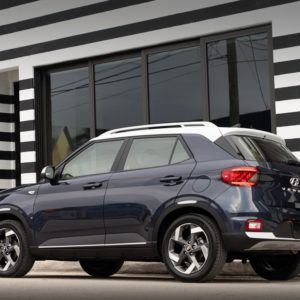Parking on an incline is not as straightforward as positioning your car next to the curb and pulling the handbrake, especially if you’re driving a manual transmission vehicle. There are some extra steps you need to do to ensure your vehicle doesn’t roll down the road.
Parking On an Incline
First things first, park your vehicle in your parking spot normally. Make sure that you’re aware that your vehicle can roll down, so step on the brakes or pull the handbrake anytime you don’t have your foot on the gas.
If parking on an incline, you should leave your vehicle in gear. When parking while facing uphill, keep your transmission in first gear. When parking while facing downhill in a car with a manual transmission, you need to leave the car in reverse. Essentially, you should shift your transmission opposite the direction it might roll.
Why Park In Gear?
Putting your vehicle in gear connects the vehicle’s wheels to the engine. When the engine isn’t turned on, it creates a lot of resistance, which acts like a brake. If the brakes fail or disengage, the transmission that’s in gear gives the vehicle another way to stop itself from rolling.
Handbrakes typically work by engaging a vehicle’s rear brakes through a direct mechanical link. Handbrake failure is highly unlikely, but there have been instances of drivers not pulling the handbrake lever far enough to keep the vehicle from rolling or even completely forgetting to engage the handbrake at all. Leaving a vehicle in gear provides a redundant system that can stop it from rolling downhill. In the unlikely event that your handbrakes fail, engine braking might be able to stop it from moving. If you’ve parked on a steep hill and the engine can’t stop it from rolling, at least the engine can slow the vehicle down a certain amount.

Point the Wheels Toward the Curb
Positioning the wheels correctly is another way to prevent your vehicle from rolling down the street.
When parking your vehicle facing downhill, turn the direction of your front wheels toward the curb.
If there is no curb, point the wheels toward the shoulder of the road, regardless of whether you are parked uphill or downhill. This will prevent the vehicle from rolling towards the center of the road should the brakes fail.
Point the Wheels Away From the Curb
If your vehicle is facing uphill, turn the wheels away from the curb and allow it to roll back slightly until the wheels gently hit the curb.
This way, your vehicle will hit the curb and likely get stuck in case it begins to roll. This prevents your vehicle from rolling downhill and damaging other vehicles or harming people. Alternatively, your vehicle might climb the curb and get stuck on the sidewalk. Either way, parking on an incline like this will keep people and traffic safe from a cascading vehicle.
Always remember to engage your parking brake whether you’re parked on a hill or on an even road. Keeping your car in gear when parked and turning the front wheels to the curb are good ways to keep your vehicle from rolling down a hill, but engaging the parking brake is still the most important.
Common Mistakes When Parking on an Incline
When learning how to park on a hill or incline, there are a few common mistakes you should try to avoid.
Wrong Wheel Position
Your vehicle’s wheel position when parking on a hill is very important to keep it from rolling into oncoming traffic in case of brake failure. Remember to point the wheels towards the curb when parking downhill, and away from the curb when parking uphill. Make a habit of double-checking your vehicle’s wheel position before leaving your vehicle when parking on an incline.
Failing to Use the Parking Brake
As mentioned, using the parking brake is essential when parking anywhere. It’s especially important when parking on an incline. The parking brake is a backup system that prevents your vehicle from rolling. Forgetting to engage your vehicle’s parking brake while on an incline will wear down the transmission, resulting in vehicle movement while parked.
Ignoring Oncoming Traffic
It’s important to stay alert of oncoming traffic at all times, even after you’ve successfully parked on a hill or incline. You might end up thinking the worst is over and forget to check for vehicles before opening your door. This can lead to disastrous accidents, so double-check your mirrors and blind spots before exiting your vehicle.
Overall, parking on a hill or incline is all about remembering to park in gear and positioning your wheels properly. After that, stay alert and double-check your parking brake and oncoming traffic. It might take a while to get used to the process, but it’s always best to develop the proper driving and parking habits early.
Any information provided on this Website is for informational purposes only and is not intended to replace consultation with a professional mechanic. The accuracy and timeliness of the information may change from the time of publication.















